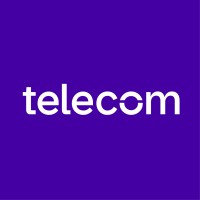
Telecom Argentina Company Cyber Security Posture
telecom.com.arWe are Telecom Argentina, a connectivity solutions and entertainment company with over 23,000 collaborators throughout the country. We transform the digital experience of our over 28 million customers providing them a secure, flexible and dynamic service on all of their devices, with high speed mobile and fixed connections, and a live and on-demand contents platform which includes series, films, gaming, music and TV shows. Through our commercial brands Personal, Fibertel, Flow and Telecom | Fibercorp, we provide services such as fixed and mobile telephony, data transmission, pay TV and Internet, for individuals, companies and institutions throughout the country. We are also present in Paraguay, providing mobile service, and in Uruguay, with pay TV. We are leaders in an industry that has become one of the pillars for the social and economic development of our country, and we are active participants in the community with sustainable practices and initiatives that add value to the use of technology as a tool for training and social inclusion.
Telecom Argentina Company Details
telecom-argentina
11401 employees
1360078.0
517
Telecommunications
telecom.com.ar
29
TEL_1389344
In-progress
Between 900 and 1000
This score is AI-generated and less favored by cyber insurers, who prefer the TPRM score.
 Telecom Argentina Global Score
Telecom Argentina Global Score.png)

Telecom Argentina Company Scoring based on AI Models
| Model Name | Date | Description | Current Score Difference | Score |
|---|---|---|---|---|
| AVERAGE-Industry | 03-12-2025 | This score represents the average cybersecurity rating of companies already scanned within the same industry. It provides a benchmark to compare an individual company's security posture against its industry peers. | N/A | Between 900 and 1000 |
Telecom Argentina Company Cyber Security News & History
| Entity | Type | Severity | Impact | Seen | Url ID | Details | View |
|---|---|---|---|---|---|---|---|
| Telecom Argentina | Ransomware | 85 | 3 | 07/2020 | TEL14716123 | Link | |
Rankiteo Explanation : Attack with significant impact with internal employee data leaksDescription: Argentina's largest telecom, one of the leading services in the country since 1990 was hit by crypto-demanding ransomware. Unknown attackers asked for $7.5 million in Monero, a major privacy coin as ransom. Numerous Windows computers owned by the company were hacked and encrypted, many of which contain sensitive data. | |||||||
Telecom Argentina Company Subsidiaries

We are Telecom Argentina, a connectivity solutions and entertainment company with over 23,000 collaborators throughout the country. We transform the digital experience of our over 28 million customers providing them a secure, flexible and dynamic service on all of their devices, with high speed mobile and fixed connections, and a live and on-demand contents platform which includes series, films, gaming, music and TV shows. Through our commercial brands Personal, Fibertel, Flow and Telecom | Fibercorp, we provide services such as fixed and mobile telephony, data transmission, pay TV and Internet, for individuals, companies and institutions throughout the country. We are also present in Paraguay, providing mobile service, and in Uruguay, with pay TV. We are leaders in an industry that has become one of the pillars for the social and economic development of our country, and we are active participants in the community with sustainable practices and initiatives that add value to the use of technology as a tool for training and social inclusion.
Access Data Using Our API

Get company history
.png)
Telecom Argentina Cyber Security News
Latin America Cybersecurity Market Size & Growth, 2033
The Latin America cybersecurity market size is estimated to garner a revenue of USD 40.11 billion by 2033, growing with a CAGR of 6.9%.
Telecom Argentina in $800 Million New Money Offering | News
Telecom is a leading telecommunications company in Argentina, offering its customers “quadruple play” services, combining mobile telephony ...
Telecom companies navigate evolving cybersecurity challenges
Telecommunications companies are facing a significant rise in cybersecurity issues driven by ever-evolving network consumption by businesses ...
AI-powered cybersecurity for telecom
To gain a deeper understanding of how telecom companies are using AI and Gen AI to address these rising cybersecurity risks, download our latest report New ...
Top In-Demand CyberSecurity Jobs for Beginners in Argentina
Explore the top in-demand cybersecurity jobs for beginners in Argentina and kickstart your career with essential skills and certifications.
Hackers reportedly compromise Argentina’s airport security payroll system
Local cyber authorities attributed the incident to a threat actor using the pseudonym "h4xx0r1337" but haven't revealed any other details. In ...
Nokia and Globe expand API capabilities to strengthen cybersecurity
Nokia head of network montisation platform, cloud and network services, Shkumbin Hamiti, added: “We are very pleased to work with Globe Telecom, ...
Salt Typhoon hackers possibly targeted telecom research at US universities
Salt Typhoon is a moniker derived from Microsoft's cyber threat labeling system, and has become the common name used in discussions about the ...
Cloud and AI for a telecom network advantage
Cloud technology enables the scalability, flexibility, and computational power necessary for handling large AI datasets, training sophisticated ...

Telecom Argentina Similar Companies
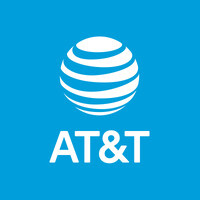
AT&T
We understand that our customers want an easier, less complicated life. We’re using our network, labs, products, services, and people to create a world where everything works together seamlessly, and life is better as a result. How will we continue to drive for this excellence in innovation?

Proximus Group
Proximus Group is a provider of future-proof connectivity and digital services, operating in the Benelux as well as global markets. As a major economic player in Belgium, we make the most of every opportunity to positively impact the world around us. The investments we make in our open fixed and mob
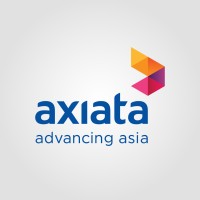
Axiata
AXIATA GROUP BERHAD 242188-H (199201010685) In pursuit of its vision to be The Next Generation Digital Champion, Axiata is a diversified telecommunications and digital conglomerate operating Digital Telcos, Digital Businesses and Infrastructure businesses across a footprint spanning ASEAN and Sout
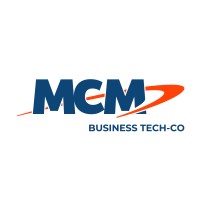
MCM Tech-Co
Conectamos personas, tecnologías y oportunidades con soluciones innovadoras y eficientes, facilitando el crecimiento en un entorno digital. Utilizamos metodologías ágiles y esquemas de co-creación con clientes para mantener nuestros servicios siempre a la vanguardia. Como parte de la búsqueda
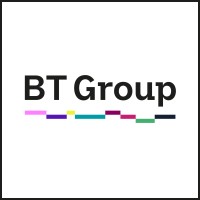
BT Group
We’re one of the world’s leading communications services companies. At BT Group, the solutions we sell are integral to modern life. Our purpose is as simple as it is ambitious: we connect for good. There are no limits to what people can do when they connect. And as technology changes our world, co

Spanco
Spanco has been an active player in this space for over a decade and today ranks amongst the best in India. We have a presence across India and provide high quality, cost effective scalable Technology Infra solutions.Spanco has dedicated teams addressing opportunities in e-Governance, PSU, Defence,

Frequently Asked Questions
Explore insights on cybersecurity incidents, risk posture, and Rankiteo's assessments.
Telecom Argentina CyberSecurity History Information
How many cyber incidents has Telecom Argentina faced?
Total Incidents: According to Rankiteo, Telecom Argentina has faced 1 incident in the past.
What types of cybersecurity incidents have occurred at Telecom Argentina?
Incident Types: The types of cybersecurity incidents that have occurred incident Ransomware.
Incident Details
Can you provide details on each incident?
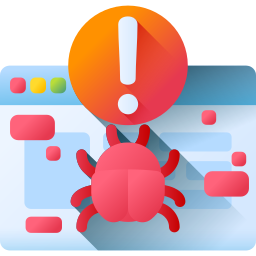
Incident : Ransomware
Title: Ransomware Attack on Argentina's Largest Telecom
Description: Argentina's largest telecom, one of the leading services in the country since 1990, was hit by crypto-demanding ransomware. Unknown attackers asked for $7.5 million in Monero, a major privacy coin as ransom. Numerous Windows computers owned by the company were hacked and encrypted, many of which contain sensitive data.
Type: Ransomware
Threat Actor: Unknown
Motivation: Financial Gain
What are the most common types of attacks the company has faced?
Common Attack Types: The most common types of attacks the company has faced is Ransomware.
Impact of the Incidents
What was the impact of each incident?

Incident : Ransomware TEL14716123
Data Compromised: Sensitive Data
Systems Affected: Windows Computers
What types of data are most commonly compromised in incidents?
Commonly Compromised Data Types: The types of data most commonly compromised in incidents are Sensitive Data.
Which entities were affected by each incident?

Incident : Ransomware TEL14716123
Entity Type: Telecom Company
Industry: Telecommunications
Location: Argentina
Data Breach Information
What type of data was compromised in each breach?

Incident : Ransomware TEL14716123
Type of Data Compromised: Sensitive Data
Sensitivity of Data: High
Data Encryption: Yes
Ransomware Information
Was ransomware involved in any of the incidents?
Additional Questions
General Information
What was the amount of the last ransom demanded?
Last Ransom Demanded: The amount of the last ransom demanded was $7.5 million.
Who was the attacking group in the last incident?
Last Attacking Group: The attacking group in the last incident was an Unknown.
Impact of the Incidents
What was the most significant data compromised in an incident?
Most Significant Data Compromised: The most significant data compromised in an incident was Sensitive Data.
What was the most significant system affected in an incident?
Most Significant System Affected: The most significant system affected in an incident was Windows Computers.
Data Breach Information
What was the most sensitive data compromised in a breach?
Most Sensitive Data Compromised: The most sensitive data compromised in a breach was Sensitive Data.
Ransomware Information
What was the highest ransom demanded in a ransomware incident?
Highest Ransom Demanded: The highest ransom demanded in a ransomware incident was $7.5 million.
What Do We Measure?
















Every week, Rankiteo analyzes billions of signals to give organizations a sharper, faster view of emerging risks. With deeper, more actionable intelligence at their fingertips, security teams can outpace threat actors, respond instantly to Zero-Day attacks, and dramatically shrink their risk exposure window.
These are some of the factors we use to calculate the overall score:
Identify exposed access points, detect misconfigured SSL certificates, and uncover vulnerabilities across the network infrastructure.
Gain visibility into the software components used within an organization to detect vulnerabilities, manage risk, and ensure supply chain security.
Monitor and manage all IT assets and their configurations to ensure accurate, real-time visibility across the company's technology environment.
Leverage real-time insights on active threats, malware campaigns, and emerging vulnerabilities to proactively defend against evolving cyberattacks.




